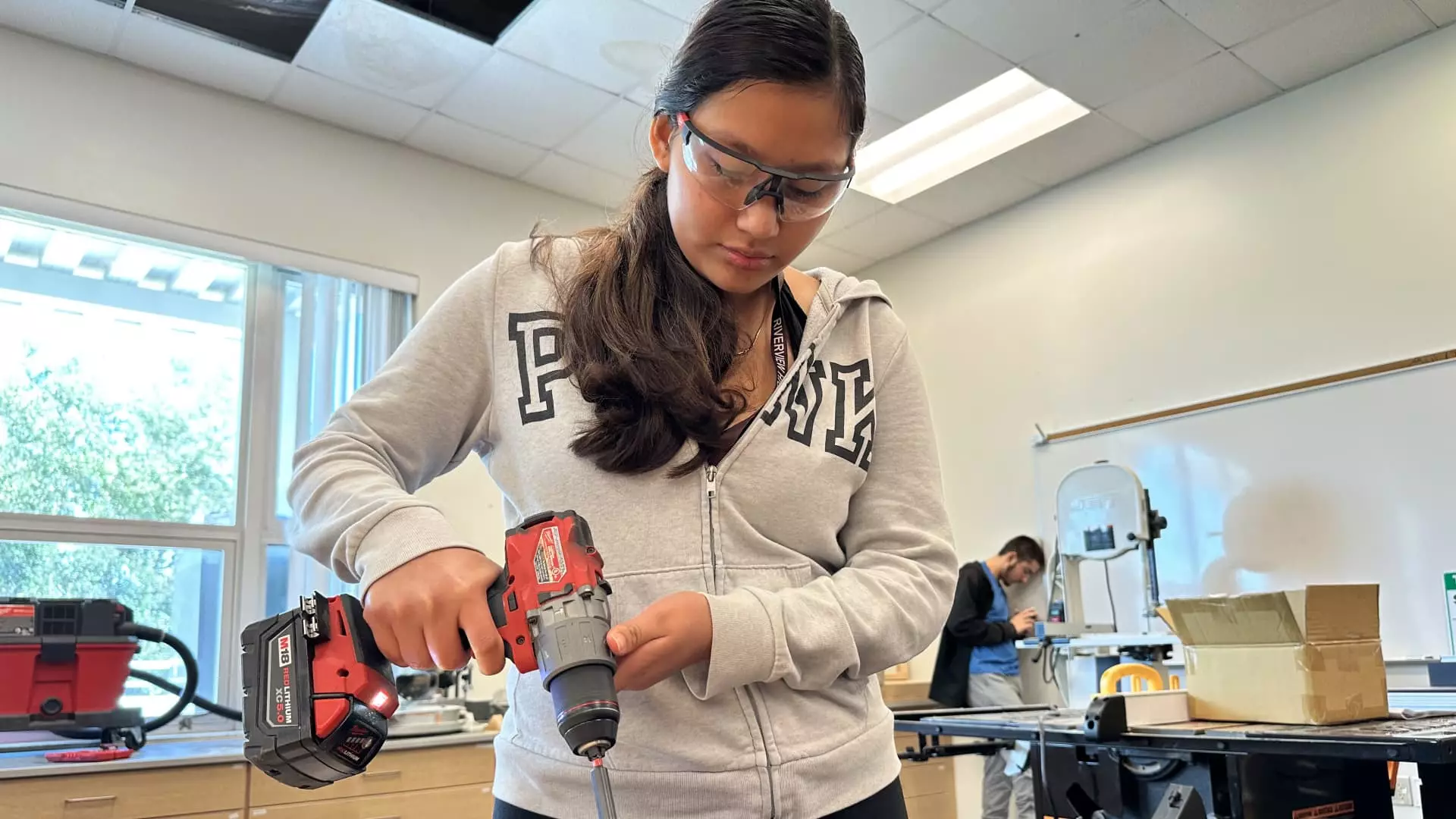In recent years, the narrative surrounding education has undergone a significant transformation. As financial burdens associated with traditional four-year colleges continue to escalate, more students are turning their attention to vocational education, seeking practical skills and immediate job opportunities. This shift is exemplified by the experience of Angela Ramirez-Riojas, an 18-year-old from Riverview, Florida. Growing up in a family that values practical work, with a grandfather who has built a career in construction, she found inspiration in the craftsmanship and dedication of those who work with their hands. For Ramirez-Riojas, college has morphed into a secondary option, with vocational training now taking precedence in her academic pursuits.
High school seniors, particularly those like Ramirez-Riojas, are increasingly questioning the traditional belief that a four-year degree is essential for success. Riverview High School has recognized this paradigm shift by establishing a construction academy that aims to prepare students for lucrative careers in skilled trades. The academy not only caters to the growing demand for workers in the construction sector but also provides a tangible path to employment for students who might otherwise feel overwhelmed by the prospect of lengthy college programs.
Riverview High School’s construction academy underscores a practical approach to education. According to Principal Erin Haughey, the academy is designed for motivated students who aspire to master a trade while remaining in their community. The program offers a limited number of classroom slots, resulting in high demand among students eager to secure a spot. With a waiting list that outstrips available spaces, the importance of these vocational programs cannot be overstated.
Education within the academy extends beyond mere physical tasks associated with construction. Instructor Jeff Lahdenpera emphasizes the multifaceted nature of the industry, which includes opportunities for certification in carpentry, plumbing, and electrical work, as well as pathways into construction management and marketing. This broad scope of learning enables students not only to build houses but also to cultivate various skills that are applicable across multiple sectors, ensuring they are well-rounded candidates for future employment.
The establishment of vocational programs such as the one at Riverview High School addresses a pressing need in the labor market. The construction industry is facing a pronounced shortage of skilled workers, exacerbated by an aging workforce that is retiring at alarming rates. To combat this issue, experts estimate the necessity for hiring over half a million additional workers annually to keep pace with labor demands. The 3.2% unemployment rate within the construction sector speaks volumes about the current opportunities available for new entrants, especially as the national average hovers around 4.2%.
Interestingly, the financial implications of pursuing a trade versus a four-year degree have become increasingly favorable for those in the construction field. Recent data indicates that new hires in construction can expect attractive starting salaries, outpacing those entering many professional services roles. The median pay for new construction hires tallied at $48,089 by the end of last year—indicative of a growing respect for blue-collar work.
As students’ attitudes towards education evolve, so too do the beliefs surrounding what constitutes a successful career path. A survey by Junior Achievement and Citizens Bank revealed that 49% of high school students consider vocational or two-year degrees sufficient for achieving their career goals. Moreover, a majority, 56%, expressed a preference for gaining real-world experience and on-the-job training over pursuing a four-year degree. These insights should challenge the long-held perception that a college education is synonymous with success.
Ted Jenkin, a certified financial planner, highlights the insidious belief that a four-year degree is the only valid indicator of success, calling attention to the growing number of youths who view vocational education as a viable, desirable alternative. The rise of the “toolbelt generation,” as Jenkin puts it, reflects broader societal changes in attitudes toward education and work.
The growing acceptance and enrollment in vocational programs signal a new era in education, one that prioritizes practical skills and job preparedness over theoretical understanding. As programs emerge to meet labor market demands and as students actively redefine success, traditional education models must adapt or risk irrelevance. The vocational paths being forged by students like Angela Ramirez-Riojas not only promise a more stable financial future but also empower individuals to pursue fulfilling careers grounded in their passions and interests. The journey toward redefining success in education is not just beneficial for students but essential for the evolving economy as well.

